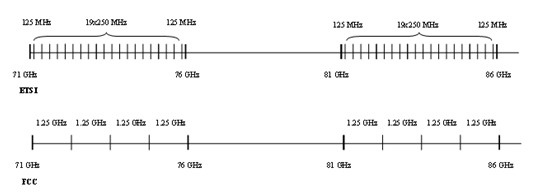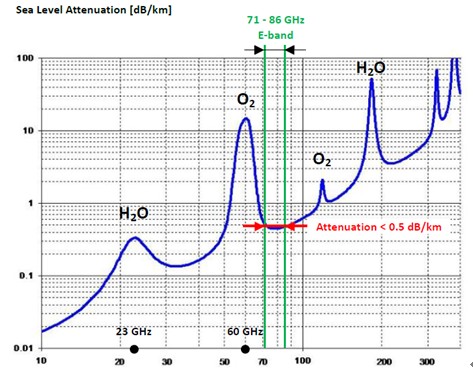On December 4, the Ministry of Industry and Information Technology officially issued TD-LTE 4G licences to China Mobile, China Telecom and China Unicom, and China officially entered the era of 4G. According to a report by GSMA Intelligence, a third-party analyst, more than 128 countries will deploy about 500 LTE networks by the end of 2017. 4G not only provides more bandwidth and brings better mobile Internet experience to people, but also challenges the carrier's mobile bearer network.
With the issuance of 4G licenses in China, the LTE network will be deployed quickly. However, LTE base station coverage is small, deployment density is much higher than GSM base station and 3G base station, LTE construction will face a large number of new site demand, and part of the new site shortage of fiber resources, the domestic estimated 20% of the new site fiber resources missing, making LTE base station service return and PTN fiber network loop are under pressure. As an important solution of mobile return, microwave can replace or supplement optical fiber, solve the problem of optical fiber shortage, and realize the rapid deployment of LTE network. However, the traditional microwave band (6-42GHz) is short of spectrum resources, and the channel spacing is small (the maximum channel spacing is 28MHz at present in China), so it is difficult to meet the large bandwidth requirement of LTE base station for bearer network. In this case, the industry has turned its attention to E-Band microwave which can provide large bandwidth. What is E-Band microwave, how much bandwidth does E-Band microwave transmission provide, and what application scenarios are suitable for?
Introduction of E-Band band microwave
E-Band RF channel configuration
In 2000, ITU-R and ETSI standard organizations classified high-frequency 71-76 GHz and 81-86 GHz microwaves, which were later referred to as E-Band.

Fig. 1. definition of E-Band radio frequency
At the same time, ITU-R, FCC and CEPT have made some suggestions on the radio frequency channel configuration of E-Band. The channel division is mainly 250MHz and 1.25GHz. It is precisely with 250MHz or even greater channel spacing resources that E-BAND microwave single-frequency point can provide greater bandwidth. At present, the industry's largest single-frequency point bandwidth is up to 2.5Gbps. In the future, it can even provide 10G air transmission bandwidth.

Figure 2. E-Band radio frequency channel configuration defined by ETSI and FCC
E-Band microwave transmission distance
The transmission distance of microwave is affected by both free space loss, atmospheric loss and rain attenuation. Next, we focus on the transmission performance of E-Band microwave.
Free space loss:
The path loss of 71GHz to 76GHz is about 130dB, and that of 81GHz to 86GHz is 131dB. This value is generally higher than the free space loss in the traditional frequency band, which directly causes the transmission distance of E-Band to be much smaller than other traditional frequency bands.
Air loss:
As can be seen from the atmospheric window diagram below, the attenuation of E-Band is very low in the range of 71 GHz to 86 GHz, which is basically less than 0.5 dB/km.

Fig. 3. atmospheric attenuation diagram
Rain failure:
For microwave above 10GHz, rain attenuation will directly restrict the distance of microwave transmission. For E-Band microwave, in very serious cases, such as rainforest rainfall (100mm/h), rain attenuation is around 30dB/km, but this generally occurs only in a short period of time, and in network design, the allowance can be reserved to adapt to weather changes. Some manufacturers also support adaptive modulation function: that is, by reducing the modulation mode to adapt to weather changes, with the QOS configuration, to ensure that high priority services can communicate normally, thereby enhancing network reliability.
E-Band is basically not affected by cloud and fog. Even if the visibility is 50 meters and the density is 0.1 g/cubic meter, the E-Band can only produce 0.4 dB/km attenuation, which can be neglected.
From the actual test situation, E-BAND microwave can work steadily in the range of 2 ~ 3km transmission distance.
Application scenarios of E-Band microwave
Compared with the traditional frequency band, E-Band has abundant frequency resources and supports wider bandwidth than the traditional frequency band. The single frequency bandwidth reaches 2.5 Gbps.
Table 1 Comparison between traditional band and E-Band
From the above analysis data, E-Band microwave is very suitable for large bandwidth transmission application scenarios, to meet the LTE bandwidth requirements for the return network, combined with China Mobile's business needs, we can roughly be divided into the following four scenarios.
1. PTN access layer patch network:
Loop network can improve the reliability and disaster tolerance of the bearer network. Operators usually have certain requirements on the network loop formation rate, especially the pursuit of high quality China Mobile. However, due to various practical difficulties and the lack of fiber resources in some stations, a considerable proportion of the network access layer is still facing the pressure of loop formation. E-Band microwave can be used as an alternative to fiber optics to complement the existing network PTN equipment (the bandwidth of access loop is 1 Gbps at present), which solves the problem that the lack of fiber resources leads to the inability of PTN network to form a loop, provides the protection capability of loop network for PTN network, and improves the reliability of transmission network.
2. LTE terminal base station access:
In densely populated areas, the bandwidth requirement of single base station (S333 configuration mode) is more than 900Mbps. E-Band microwave has abundant spectrum resources in 1-3 Km short-range scenario, which can be used to solve the problems of resource shortage and transmission bandwidth of traditional microwave band. As the terminal LTE base station service access, E-Band microwave can solve the problem of fiber missing in some new sites and realize the rapid deployment of LTE base station.
3. major customer lines:
For data service interconnection dedicated lines, enterprise link leasing and other services with bandwidth requirements of more than 1 Gbps, some buildings can not be deployed because of the difficulty of fiber laying, high cost and long cycle. E-Band microwave can be used as an alternative fiber between IP/MPLS routers or L2 switches to solve the problem of fiber and deployment difficulties.
4. integrated services access:
E-Band microwave provides 2.5G wide bandwidth, can easily carry base station/Wi-Fi, large customers, broadband and other services at the same time. In the absence of fiber, and there is a demand for integrated services, E-BAND microwave bandwidth advantages can be rapidly deployed to establish a leading brand, attract more high-value customers.

Fig. 4. four main application scenarios of E-Band microwave
E-Band spectrum has been opened in 47 countries, E-Band microwave has been deployed in Europe, the Middle East and other regions on a large scale, Huawei has 40 E-band microwave commercial success in the world. But E-band microwave is still in the experimental stage in China. Recently, China Mobile and Huawei have established the first E-Band test Bureau in China in Beijing Mobile Network. The physical link, service test and reliability verification of E-Band have been completed, providing detailed experimental data and technical evaluation for spectrum opening. At present, the test Bureau bears the LTE service of the existing network, and PTN hybrid group protection ring network, providing high quality, large bandwidth protection.